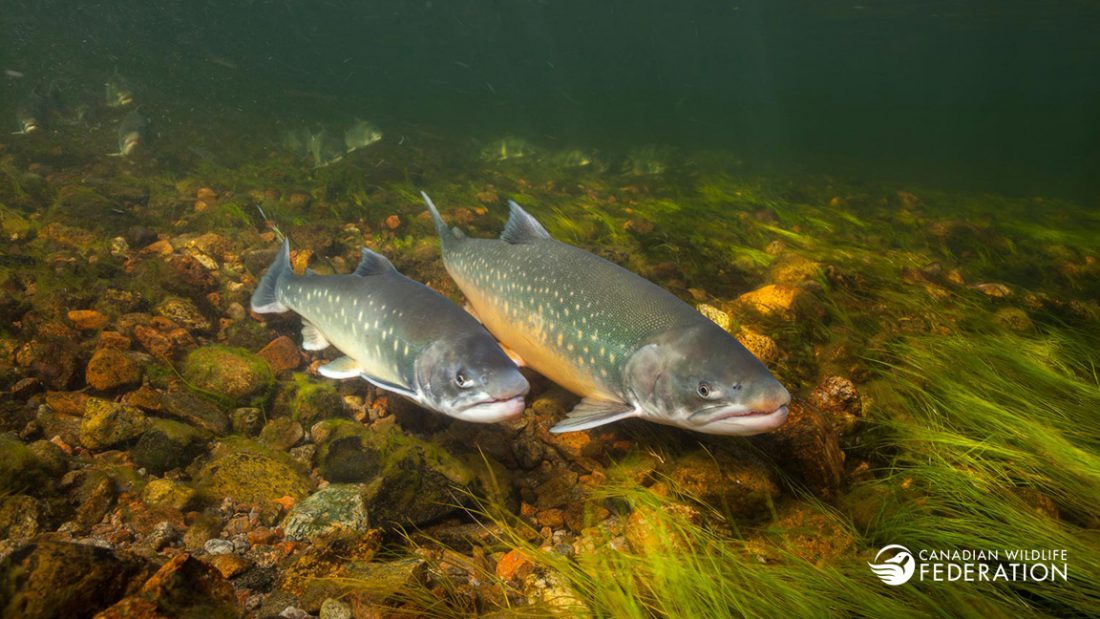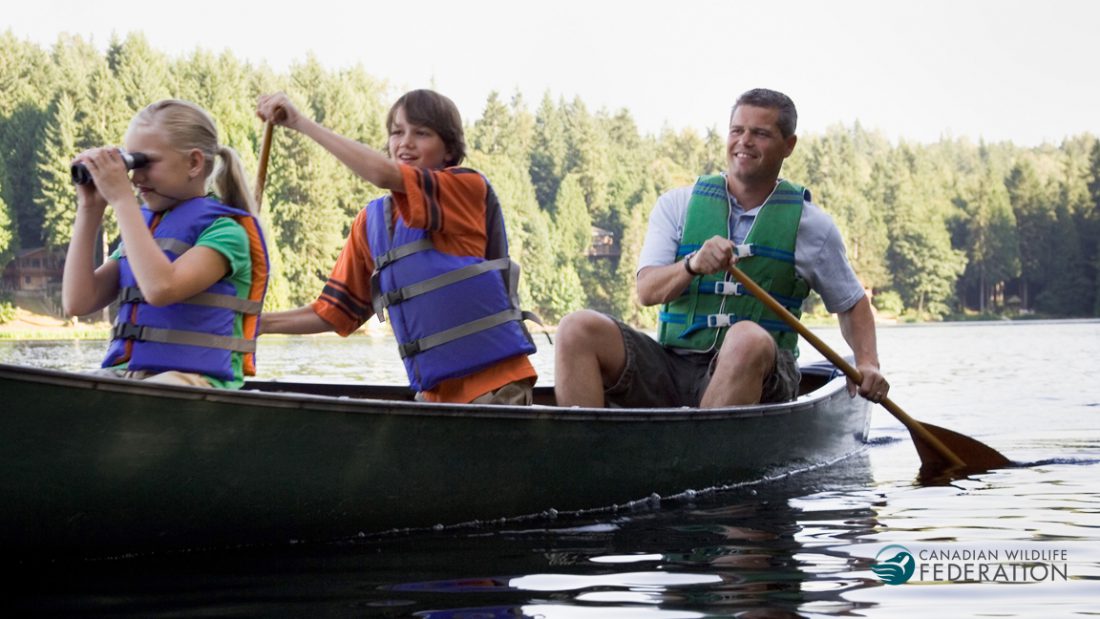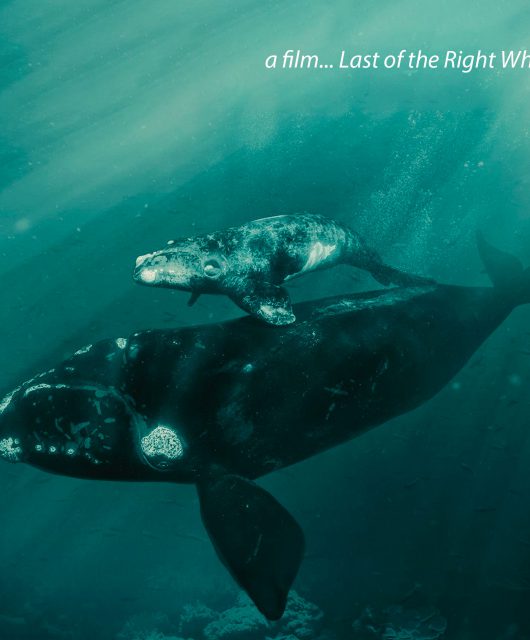Earlier this year, Fisheries and Oceans Canada began a national review of habitat protections under the Fisheries Act, a federal law that governs Canada’s fisheries and the habitats that support them.
The sad reality is that fish habitat is declining in Canada and significant gaps in the Fisheries Act are contributing to this ongoing decline. Many beneficial changes were made to the Act in 2012, but significant protections were also lost. The current review of the Act is an opportunity for us to enhance protections for fish and their habitat.
The importance of the Fisheries Act
Fish and fisheries are an important part of the economy and culture of Canada. The Fisheries Act plays a major role in many of our daily lives—from regulating commercial fisheries that bring wild fish to your dinner table to protecting lakes where we camp and cottage. Commercial and recreational fisheries represent a $14 billion/year industry. The Standing Committee on Fisheries and Oceans, a parliamentary committee, has the important task of reviewing existing habitat provisions and public recommendations (like those from CWF) in order to fulfill the government’s duty to protect this key resource.
Did you know? The Fisheries Act became one of Canada’s first laws in 1868. It offers protections for a variety of vital services Canadians enjoy, such as clean and safe drinking water and outdoor recreation.
CWF’s recommendations
On October 31, I testified before the Standing Committee on Fisheries and Oceans along with CWF’s Conservation Science Director David Browne. Together, we outlined several recommendations that would prevent further harm to fish habitat and help restore Canada’s aquatic ecosystems. A detailed report of our recommendations can be downloaded here.
The campaign #TalkFishHabitat gave Canadians from all backgrounds the opportunity to submit ideas for enhancing habitat protection. The forum will reopen in spring 2017.
There are many strong elements of the Fisheries Act that we hope to see maintained. Here is a quick summary of the recommendations and issues that we would like the Committee to explore.
1. Making sure we protect all fish and their habitat
Let’s start with the importance of language. 2012 changes to the Act eliminated the long standing prohibition against the harmful alteration, disruption, and destruction of fish habitat. This was replaced with a prohibition against causing serious harm, with a focus on permanent harm. This language causes confusion and leaves parts of the Act open to interpretation, which ultimately makes it easier to exploit the law. Reverting to the old language allows us to benefit from years of jurisprudence and legal clarity.
All fish matter, yet the current Act only protects fish that are part of a fishery or that support such fisheries. Though CWF recognizes that some fish are particularly important to Canadians, modern fisheries science recognizes how complex ecosystems really are. The concept of ecosystem-based management has largely replaced efforts to manage individual species, yet recent changes to the Fisheries Act defy this trend. Maintaining healthy fish habitat is the best way to protect our ecosystems, so our recommendation is to apply prohibitions to all fish and their habitats.
2. Thinking beyond the water
What happens on land affects our lakes and rivers, especially along the shoreline—an area known as the Riparian zone. This zone filters chemicals and sediment runoff, regulates water flow and temperature, and directly provides nutrients and habitat to aquatic ecosystems. Right now, only activities that occur in water are covered by federal law. Thinking about on-land activities and how they affect the water is important too.

3. Holding industry and others accountable
The 2012 changes to the Fisheries Act gave industry the power to self-assess and decide for themselves whether their projects harm fish habitat. If they believe that a project will not cause serious harm, they can go ahead without even notifying anyone. This makes it difficult to monitor potential harm to fish habitat. We believe a public record of all projects occurring on or near the water would help conservation officers enforce the law and support the public when reporting a possible infraction.
We also need to ensure that commercial activities that harm fish habitat are offset by some kind of protective measure. For small projects, offset fees can be good for both environment and industry. Such fees can accumulate in a habitat restoration fund accessible to environmental NGOs. This ensures that damage done by development projects is offset, without requiring industry to undergo a lengthy environmental review process for small, routine projects.
In other cases, creating a whole new habitat when one is destroyed can be more beneficial. This is called offsetting, and is currently a standard practice for large projects. Habitat banking is a modern form of offsetting that is popular in the US, but has yet to be fully explored here in Canada. This can give industry even more flexibility, yet provide greater environmental benefits if done properly. For more information, check out the Toronto Island Habitat Bank Project.
The future of fish
Fish need a healthy environment to live, feed, migrate and reproduce in. And since fish are an important part of Canada’s culture and economy, the current review of the Fisheries Act is an important milestone for the future of our fisheries and fish habitat.
As the review continues, you can count on CWF to voice your environmental concerns. We will continue to play our role in shaping the future of Canada’s fisheries and sharing news with you along the way.
This post was written by Nick Lapointe with support from Deyra Fontaine, Social Media and Digital Manager, CWF.






